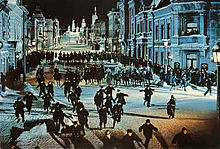 |
| The view from the Campanile of San Giorgio Maggiore |
 |
| The Grand Canal from the Accademia Bridge |
La Serenissima, Queen of the Adriatic, City of Water, La Dominante, City of Masks, City of Bridges,The Floating City, City of Canals and Venezia. The multinominal champion of cities. Venice, the dream city, the city that if left unvisited will leave a lacuna in any traveller's cultural history.
 |
| St Mark's Square reflected on the San Giorgio Vaporetti Stop |
 |
| I stood in Venice, on the Bridge of Sighs: A palace and a prison on each hand..Byron |
 |
| Local Graffiti of an Outlander |
 |
| Outside Cafe Florian |
 |
| "Streets flooded. Please advise" Telegram to his Editor from Robert Benchley. |
 |
| A Night at the Opera |
 |
| Seeing and being seen at La Fenice. |
You will rarely meet a Venetian in Harry's Bar or Cafe Florian, except perhaps, during the deep night when the exhausted incomers have wearily decamped to their hotel beds. You will perhaps spot the Venetians if you venture to Teatro La Fenice for an opera or to Teatro Goldoni to see a play. In these cultural oases, in their Italian finery and jewellery, they gather to be seen as much as to see.
 |
| Many a time and oft in The Rialto you have rated me.. |
 |
| Teatro Goldoni in the rain |
 |
| Taking a richly deserved bow |
Apart from the Temples, Churches, Galleries, Museums and Architecture, Venice has myriad other pleasures. Getting lost in the labyrinthine alleys away from the signposted arteries to the Rialto and St Mark's, stumbling upon obscure piazzas, visiting the outer islands such as Torcello and San Michele the burial place of Ezra Pound, Stravinsky and Diaghilev, supping inexpensive Aperol Spritz while savouring a variety of gorgeous chichetti in a canalside bar, these just a few of the pleasures of Venice.
 |
| Spritz for two |
 |
| The piazza of Chiesa di San Giorgio Maggiore |
 |
| Shop window display, St Mark's Square |
 |
Che bello, che magnifici, che luce, che colore! |




































